Winslow Homer (1836-1910)Sailboats at Gloucester watercolor and pencil on paper 8 1/8 x 13 9/16 in. (20.6 x 34.5 cm.) Executed in 1880.FootnotesProvenance Charles Savage Homer, Jr. (1834-circa 1917), brother of the artist, by descent from the artist, 1910. Mrs. Charles Savage Homer, Jr., wife of the above, by descent from the above, 1917. Alexander Moss White (1870-1929), New York. Elsie Helen (née Ogden) White, New York, wife of the above, by descent from the above, 1929. Ogden White (1909-1984), New York, son of the above, from the above, 1929. Sally (née White) Lee (1932-2014), New Jersey and South Carolina, daughter of the above, by descent from the above, 1984. Charles Carroll Lee, Jr. (1929-2015), Okatie, South Carolina, husband of the above, by descent from the above, 2014 By descent within the family of the above to the present owners, 2015. Exhibited Gloucester, Massachusetts, Cape Ann Museum, Homer at the Beach: A Marine Painter's Journey, 1869-1880, August 3-December 1, 2019, p. 137, no. 88, illustrated. New York, Debra Force Fine Art, Inc., Traveling America: East to Midwest, September 24-November 6, 2020. Literature L. Goodrich, A.B. Gerdts, ed., Record of Works by Winslow Homer Volume III, 1877 to March 1881, New York, 2008, p. 367, no. 985, illustrated. Executed in 1880, Sailboats at Gloucester is part of the series of works created by Winslow Homer during his second summer in the famed fishing port of Gloucester Massachusetts, which are recognized as some of the finest examples he produced in watercolor. The works created during this period are defined by the subject matter and medium, which were masterfully captured and executed by Homer. Sailboats at Gloucester exhibits Homer's incomparable ability to capture the light and vitality of the New England maritime life and coastline, at a watershed moment in his life. As D. Scott Atkinson explains, "If the summer of 1873 was a period of nascent learning, the summer of 1880—devoted exclusively to watercolor—was one of culminating maturation. The long apprenticeship that had begun in Gloucester concluded there with a group of watercolors demonstrating Homer's command of the medium and breadth of vision." (D.S. Atkinson, Winslow Homer in Gloucester, Chicago, 1990, p. 53) In 1875, after spending the prior two decades cultivating a reputation as an illustrator of the highest caliber, Winslow Homer all but abandoned the practice. The exact reason for this abrupt change is unknown, though it is likely that he had two years prior, during his first summer in Gloucester in 1873, Homer had begun to create watercolors. As Lloyd Goodrich describes it, "Watercolor suited Homer perfectly from the first. In it, he could work from nature and produce a finished picture in one sitting. In watercolor he was to make the discoveries – of places and subjects, light and color – that he later embodied in oil. The translucency of the medium, with the white paper a basis for the washes, made an immediate difference in his color, which attained a new clarity and luminosity. The freshness and freedom of his watercolors anticipated later developments in his paintings. Once started on watercolor he made it a medium as important as oil." (L. Goodrich, Winslow Homer New York, 1973, p. 31.) From these early examples, Homer made continuous progress throughout the 1870's in the strength and quality of his watercolors. His compositions took on more elements while simultaneously becoming more concise and cohesively rendered. By his return to Gloucester in the summer of 1880, Homer had mastered the medium. Unlike other artists who utilized watercolor to create preparatory plein-air sketches for finished oil works, Homer's watercolors were robust and strong enough to be equal in stature and execution to oil painting. Homer was so certain of his abilities with the medium, that in a letter to a friend he stated, "You will see, in the future I will live by my watercolors" (as quoted in Winslow Homer p.
Winslow Homer (1836-1910)Sailboats at Gloucester watercolor and pencil on paper 8 1/8 x 13 9/16 in. (20.6 x 34.5 cm.) Executed in 1880.FootnotesProvenance Charles Savage Homer, Jr. (1834-circa 1917), brother of the artist, by descent from the artist, 1910. Mrs. Charles Savage Homer, Jr., wife of the above, by descent from the above, 1917. Alexander Moss White (1870-1929), New York. Elsie Helen (née Ogden) White, New York, wife of the above, by descent from the above, 1929. Ogden White (1909-1984), New York, son of the above, from the above, 1929. Sally (née White) Lee (1932-2014), New Jersey and South Carolina, daughter of the above, by descent from the above, 1984. Charles Carroll Lee, Jr. (1929-2015), Okatie, South Carolina, husband of the above, by descent from the above, 2014 By descent within the family of the above to the present owners, 2015. Exhibited Gloucester, Massachusetts, Cape Ann Museum, Homer at the Beach: A Marine Painter's Journey, 1869-1880, August 3-December 1, 2019, p. 137, no. 88, illustrated. New York, Debra Force Fine Art, Inc., Traveling America: East to Midwest, September 24-November 6, 2020. Literature L. Goodrich, A.B. Gerdts, ed., Record of Works by Winslow Homer Volume III, 1877 to March 1881, New York, 2008, p. 367, no. 985, illustrated. Executed in 1880, Sailboats at Gloucester is part of the series of works created by Winslow Homer during his second summer in the famed fishing port of Gloucester Massachusetts, which are recognized as some of the finest examples he produced in watercolor. The works created during this period are defined by the subject matter and medium, which were masterfully captured and executed by Homer. Sailboats at Gloucester exhibits Homer's incomparable ability to capture the light and vitality of the New England maritime life and coastline, at a watershed moment in his life. As D. Scott Atkinson explains, "If the summer of 1873 was a period of nascent learning, the summer of 1880—devoted exclusively to watercolor—was one of culminating maturation. The long apprenticeship that had begun in Gloucester concluded there with a group of watercolors demonstrating Homer's command of the medium and breadth of vision." (D.S. Atkinson, Winslow Homer in Gloucester, Chicago, 1990, p. 53) In 1875, after spending the prior two decades cultivating a reputation as an illustrator of the highest caliber, Winslow Homer all but abandoned the practice. The exact reason for this abrupt change is unknown, though it is likely that he had two years prior, during his first summer in Gloucester in 1873, Homer had begun to create watercolors. As Lloyd Goodrich describes it, "Watercolor suited Homer perfectly from the first. In it, he could work from nature and produce a finished picture in one sitting. In watercolor he was to make the discoveries – of places and subjects, light and color – that he later embodied in oil. The translucency of the medium, with the white paper a basis for the washes, made an immediate difference in his color, which attained a new clarity and luminosity. The freshness and freedom of his watercolors anticipated later developments in his paintings. Once started on watercolor he made it a medium as important as oil." (L. Goodrich, Winslow Homer New York, 1973, p. 31.) From these early examples, Homer made continuous progress throughout the 1870's in the strength and quality of his watercolors. His compositions took on more elements while simultaneously becoming more concise and cohesively rendered. By his return to Gloucester in the summer of 1880, Homer had mastered the medium. Unlike other artists who utilized watercolor to create preparatory plein-air sketches for finished oil works, Homer's watercolors were robust and strong enough to be equal in stature and execution to oil painting. Homer was so certain of his abilities with the medium, that in a letter to a friend he stated, "You will see, in the future I will live by my watercolors" (as quoted in Winslow Homer p.


.jpg)
/825/1227825.jpg)

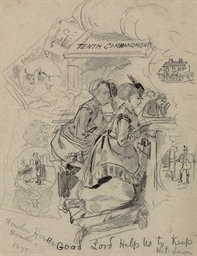

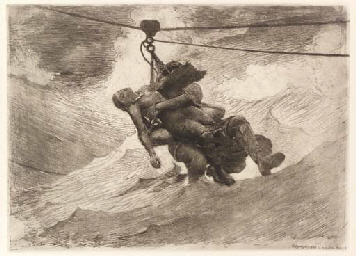
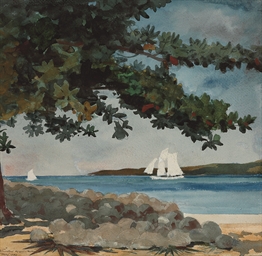
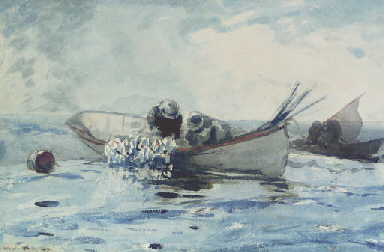
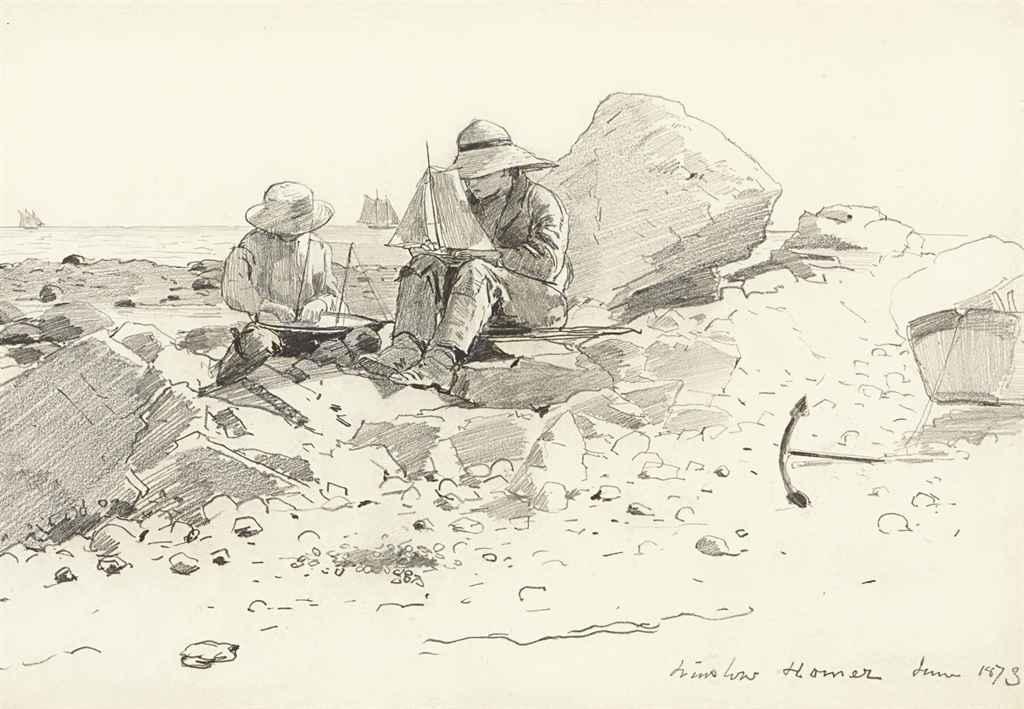
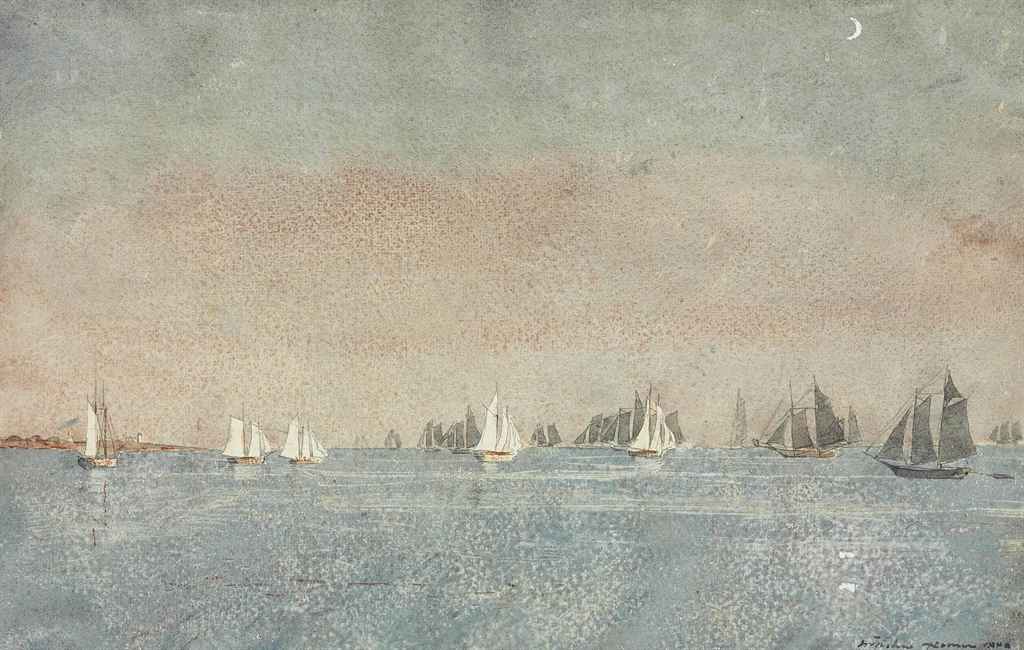
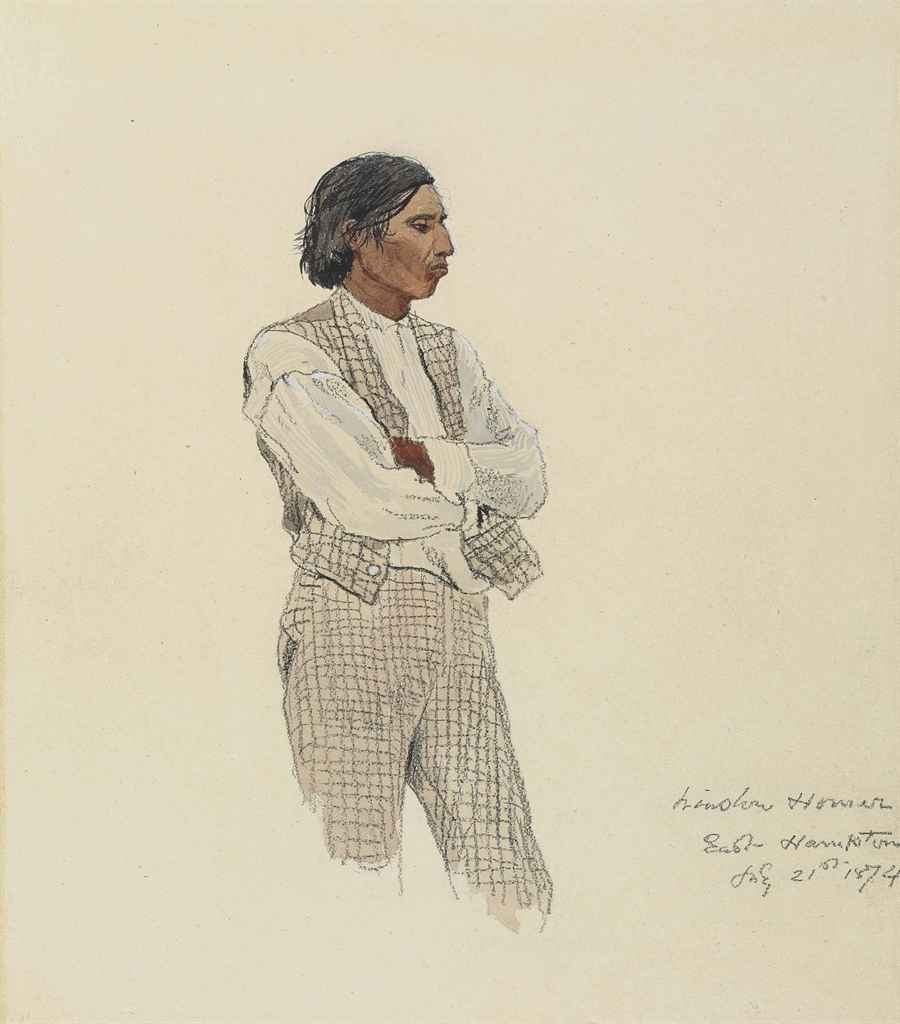

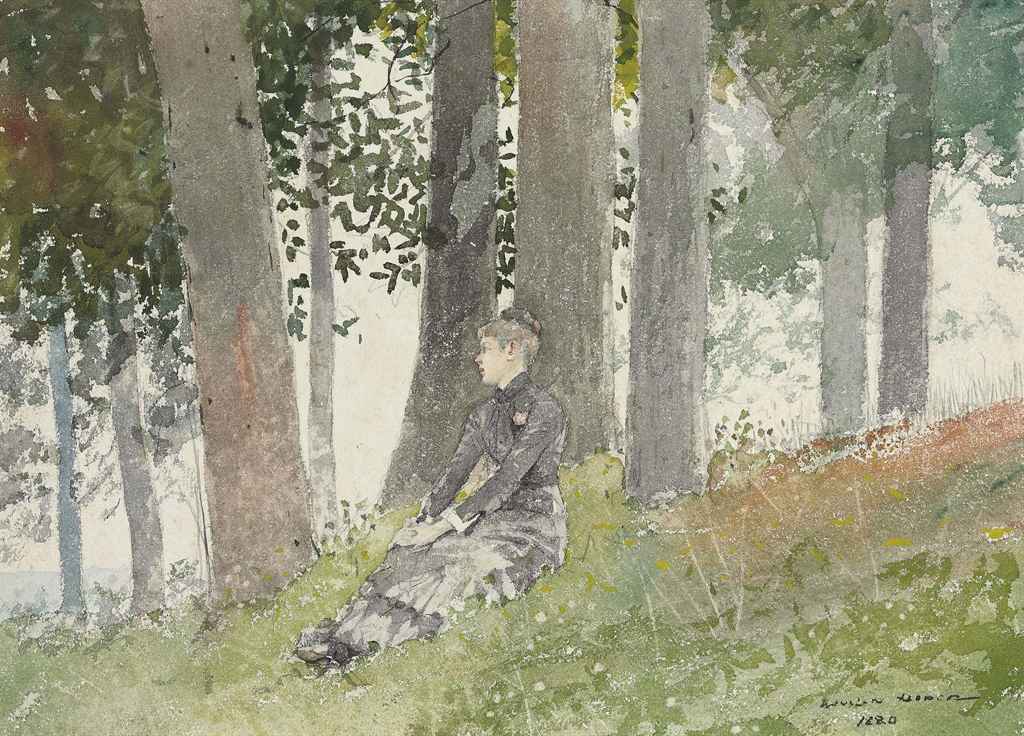
Try LotSearch and its premium features for 7 days - without any costs!
Be notified automatically about new items in upcoming auctions.
Create an alert